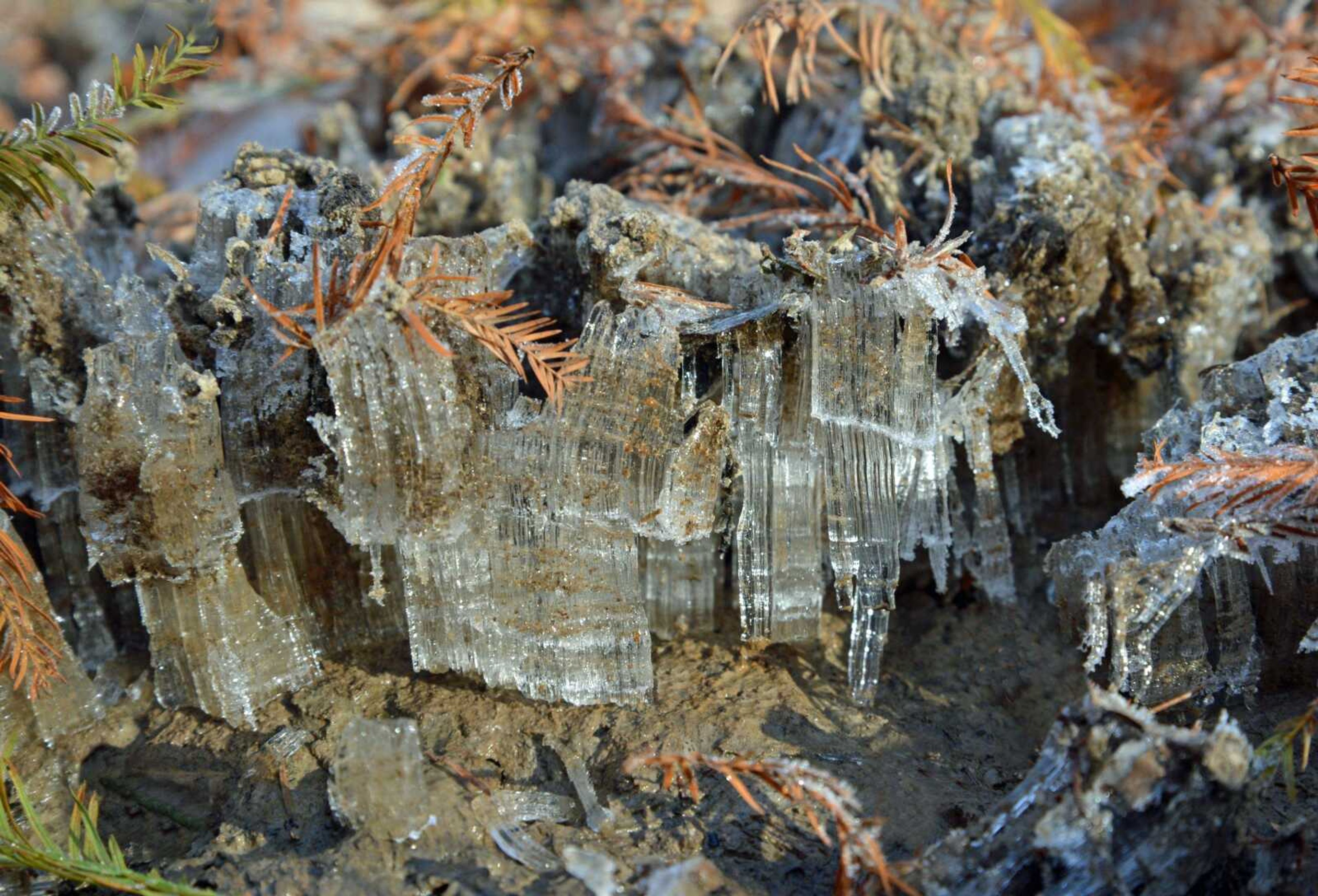An ice-formation curiosity
I found this strange ice structure in a wetland area Nov. 14. This short-lived ice-formation curiosity is called needle ice. It is similar to frost flowers, which form under similar conditions, but uses plant sap to evolve. Needle ice forms only when special atmospheric and terrestrial conditions come together favorably...
I found this strange ice structure in a wetland area Nov. 14. This short-lived ice-formation curiosity is called needle ice. It is similar to frost flowers, which form under similar conditions, but uses plant sap to evolve. Needle ice forms only when special atmospheric and terrestrial conditions come together favorably.
Soil must be saturated with water and remain warmer than freezing while needle ice is forming. Air temperature at ground level must be below freezing while needle ice is forming. Lack of wind aids in this phenomenon, allowing cold air to settle quietly on low-lying wet soil.
When the air at the earth's surface falls to 32 degrees Fahrenheit, water in the soil is lifted up as it freezes into ice. Small columns of ice continue to slowly grow upward as long as conditions are optimal. The small columns of ice often lift dirt, small pebbles and debris as they grow. Needle ice stops growing when the soil freezes or when the air touching the soil is insufficiently cold enough to continue raising the columns. Needle ice normally grows no taller than a few inches.
Connect with the Southeast Missourian Newsroom:
For corrections to this story or other insights for the editor, click here. To submit a letter to the editor, click here. To learn about the Southeast Missourian’s AI Policy, click here.










